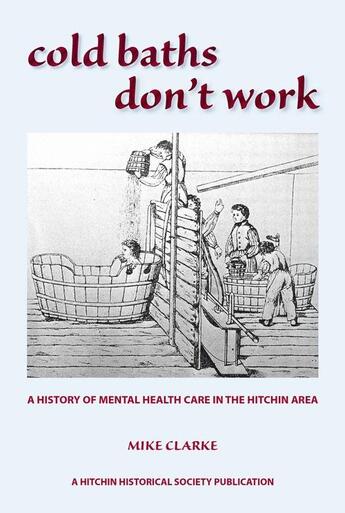Résumé:
Cold baths do not work, it seems, but many remedies have been tried over the years.
This book spans 350 years of mental health care in Hitchin and the local area. It starts with William Drage, the 17th century Hitchin apothecary, who is commemorated by the mortar and pestle in the Physic Garden... Voir plus
Cold baths do not work, it seems, but many remedies have been tried over the years.
This book spans 350 years of mental health care in Hitchin and the local area. It starts with William Drage, the 17th century Hitchin apothecary, who is commemorated by the mortar and pestle in the Physic Garden outside Hitchin Museum. His published work includes descriptions of the influence of the planets and witches, and various herbal remedies. A cold bath was prescribed for George Radcliffe of Hitchin Priory in 1731, without much hope of curing his `insanity', and the other medical and legal remedies are described.
Two of the great 19th century reformers, Samuel Whitbread and Samuel Tuke, have local connections.
The notorious case in 1858 of the confinement of the wife of Sir Edward Bulwer Lytton, the author and government minister of Knebworth House, is described. This involved Robert Gardiner Hill and Charles Hood, eminent alienists of that time, and John Forster, friend of Charles Dickens and the Secretary of the Lunacy Commission.
Some of the more benevolent Victorian attempts to improve the care of the mentally ill are included, with an account of the local temperance movement. Henry Hawkins, the founder of the Mental Care Association in 1879, and the famous hermit, "Mad Lucas", who resisted efforts by his family to have him certified, also lived nearby.
The care provided in Bedford and then Three Counties Asylums, as well as the private licensed houses and the workhouse in the 19th century is described, and then the developments throughout the 20th century.
Finding ways that help each individual and family is a continuing challenge. This book does not provide any new answers, but it may help make some sense of what has been tried in the past.
Donner votre avis














